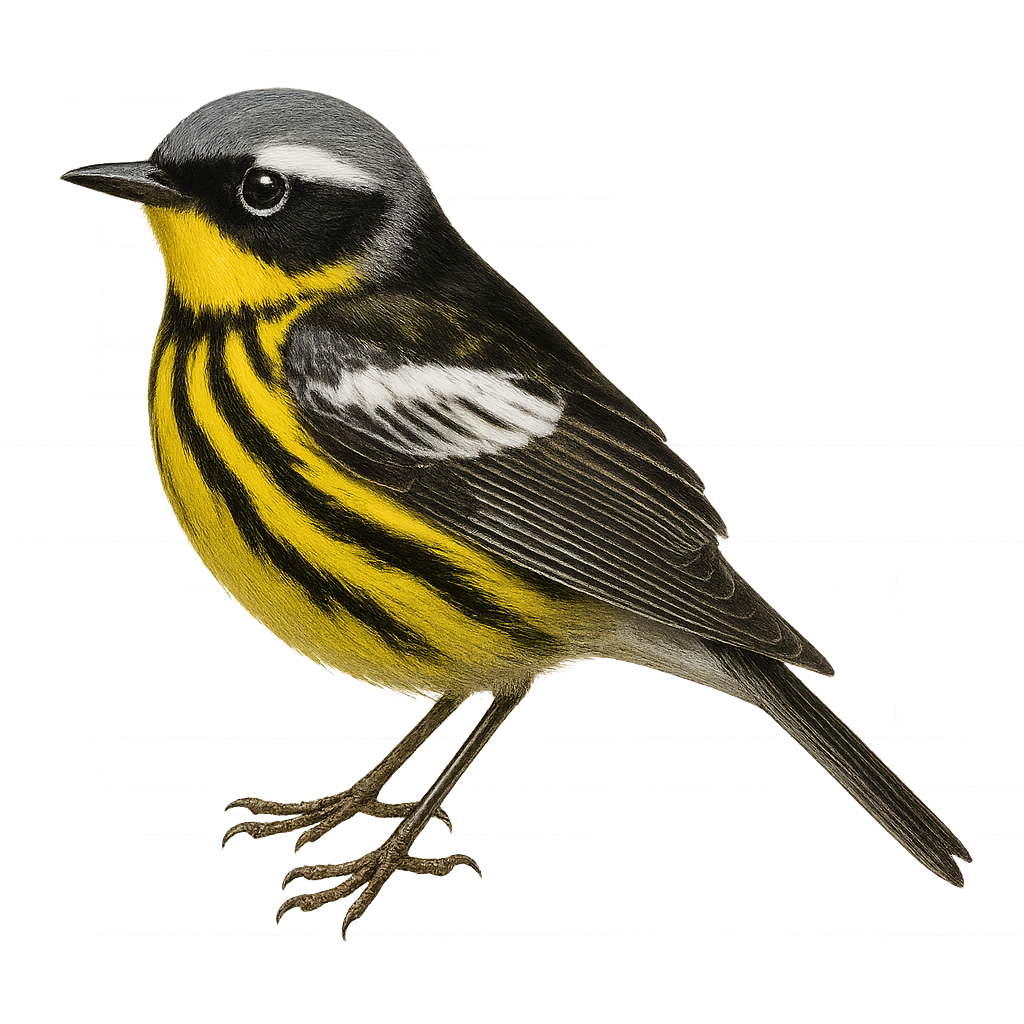Your wildlife photography guide.
Explore the magnolia warbler in detail, study its behavior, prepare your shots.
Where to observe and photograph the magnolia warbler in the wild
Learn where and when to spot the magnolia warbler in the wild, how to identify the species based on distinctive features, and what natural environments it inhabits. The WildlifePhotographer app offers tailored photography tips that reflect the magnolia warbler’s behavior, helping you capture better wildlife images. Explore the full species profile for key information including description, habitat, active periods, and approach techniques.
Magnolia Warbler
Scientific name: Setophaga magnolia

IUCN Status: Least Concern
Family: PARULIDAE
Group: Birds
Sensitivity to human approach: Suspicious
Minimum approach distance: 10 m
Courtship display: May to June
Incubation: 11-13 jours
Hatchings: May to July
Habitat:
Coniferous forests, mixed forests, wooded areas
Activity period :
Primarily active during the day, with peak activity in the morning and late afternoon.
Identification and description:
The Magnolia Warbler is a small songbird in the Parulidae family, known for its vibrant plumage and distinctive markings. The male features a black back with white streaks and a bright yellow belly, while the female has duller colors. These migratory birds breed primarily in the coniferous forests of Canada and the northern United States, wintering in Central America. They feed mainly on insects and larvae, capturing them by flitting agilely among branches. Their melodious song is often heard in spring, heralding the breeding season. Although their population is stable, deforestation and habitat loss pose potential threats.
Recommended lens:
400 mm – adjust based on distance, desired framing (portrait or habitat), and approach conditions.
Photography tips:
To photograph the Magnolia Warbler, focus on coniferous forests where it breeds. Use a 400mm or longer telephoto lens to capture detailed images without disturbing the bird. Be patient and discreet, as this bird is suspicious. Listen for its song to locate its position. Morning is the best time to photograph, as the light is soft and bird activity is at its peak.
The WildlifePhotographer App is coming soon!
Be the first to explore the best nature spots, track rutting seasons, log your observations, and observe more wildlife.
Already 1 439 wildlife lovers subscribed worldwide

